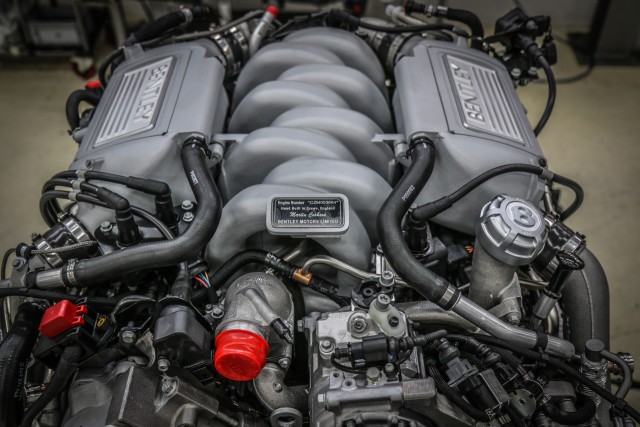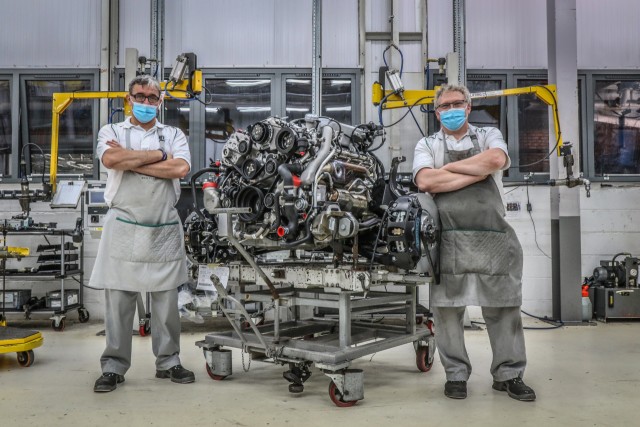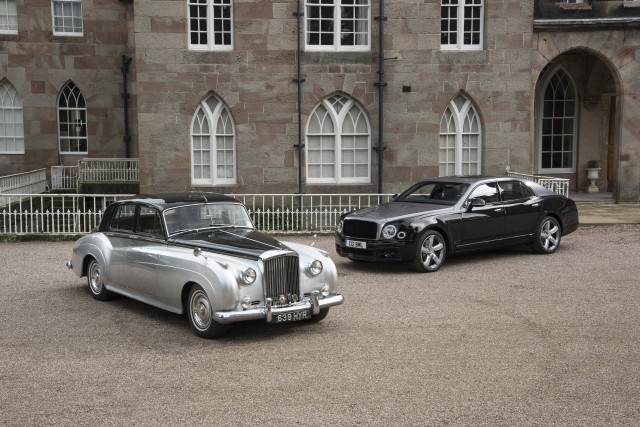The iconic Bentley V8 displacing 6¾ litres has breathed its last in the Crewe facility although it will breath on for more years to come in surviving models the world over.

The mighty 6.75-litre Bentley V8 L-series engine has been the longest serving V8 design in continuous production. Now, it has finally reached the end of its handcrafted manufacturing run. The final engine was assembled in Crewe on 1 June 2020 by the dedicated team of seven people between whom is a wealth of 105 years of combined experience building the iconic Bentley V8 engine.
Having been in production for more than 60 years, and with the same configuration and bore spacing as the very first version from 1959, the last L-Series engine will spend its life powering the 30th and last of the specially commissioned Mulsanne 6.75 Edition by Mulliner. This bespoke series also marks the end of the Mulsanne’s production run, and celebrates the life of its iconic engine with a myriad of V8-inspired details including badging, blueprint graphics and even ventilation “organ stops” featuring a miniature version of the oil cap.

The 6.75-litre Bentley V8 was originally designed by a team of engineers in the 1950s to deliver a step change in performance over the straight six it replaced. The L-Series V8 first saw service in the 1959 Bentley S2 – developing around 180 hp, deemed “adequate” by Bentley at the time. Since then, through the advent of continual design improvement, turbocharging – first single, then twin, electronic control systems, fuel injection and variable valve timing the modern descendant of that original engine has evolved into something truly extraordinary.
In the Mulsanne Speed, the highest-performance iteration, the Bentley V8 displaced 6,749 cc and developed 537 hp at 4,000 rpm, together with an astonishing peak torque of 1,100 Nm from just 1,750 rpm. The low-revving engine delivered a unique character that defined the widely-recognised “wave of torque” that all Bentleys now ride. The Mulsanne and its Extended Wheelbase avatar, meanwhile, still made a very credible 512 hp and 1,020 Nm. That said, at the same time, the emissions have also been drastically reduced, with the modern engine producing 99 per cent fewer harmful emissions than its forebear.
Each of the 36,000 L-Series Bentley V8 engines built over the last 60 years has been hand-built in the workshops of Crewe. Even the modern engine takes 15 hours to build, and the key internal components are individually chosen to form a matching, balanced set so that the engine runs perfectly smooth – a skill that takes years to perfect. Once completed, and after thorough testing, the engine is signed off by one of Bentley’s engine specialists, as it has been for decades – with a plate denoting their signature affixed to the front of the engine.
Peter Bosch, Bentley’s Member of the Board for Manufacturing, said, “Our venerable 6¾-litre V8 has powered the flagship Bentley for more than six decades, and so has earned its retirement. I am extremely proud of the generations of skilled craftspeople that have meticulously assembled every one of these engines by hand over the years. That this engine stood the test of time for so long is testament to the ingenious engineers who kept making the engine ever more powerful, refined and reliable. Now, we look forward to the future of Bentley, powered by our exceptional W12, sporting 4.0-litre V8 and of course our efficient V6 hybrid – the start of our journey to electrification.”

The Bentley Mulsanne will complete production once the 30 special 6.75 Edition by Mulliner cars have been built. Following that, the all-new Flying Spur will become the flagship model, as the pinnacle of Bentley’s exquisite range of luxurious cars. The Flying Spur is set to receive a hybrid powertrain by 2023, symbolizing Bentley’s commitment to change and its journey towards sustainable luxury mobility.
Also read: Bentley Bentayga Hybrid Arrives




















Leave a Reply